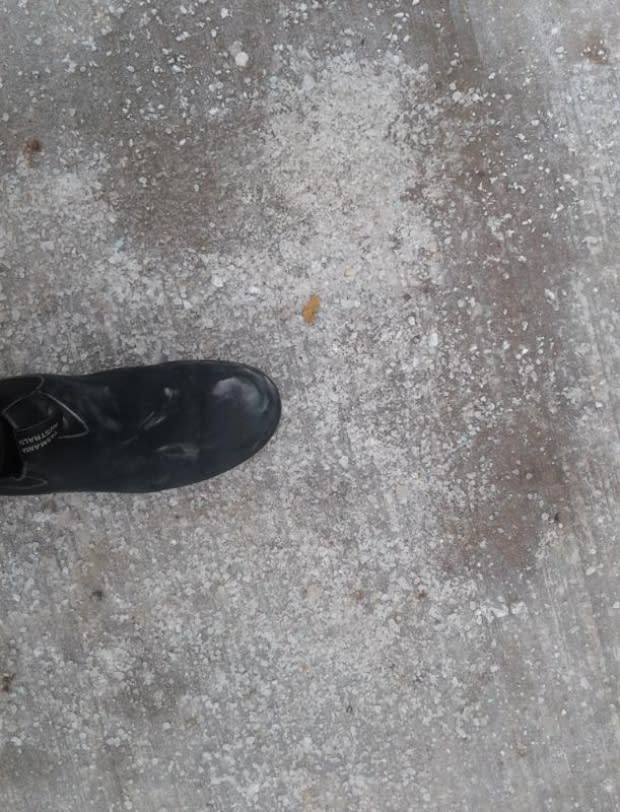Mount Allison students are curbing salt use on sidewalks to save cash, the environment
Josh Kurek is challenging his environmental studies students to think of ways to reduce salt use on Mount Allison University walkways and parking lots without hurting safety.
Scientists have found freshwater lakes getting saltier each year because of runoff from salted roads.
In Canada, the amount of rock salt used ranges from two to nearly five million tonnes a year, according to the Department of Environment and Climate Change.
The estimate doesn't include salt used on sidewalks or by private homes and institutions.
Mount Allison University, for example, spends $12,000 to $15,000 a year on rock salt, depending on the year.
Kurek said he hopes his third and fourth-year students can come up with ways to maintain safe parking lots and pathways free from ice, while reducing the cost to the university and the environment.
Kurek said studies show that even a small area of paved ground near a wetland can increase the risk of that lake becoming saltier.
"In many lakes that are surrounded by urbanized areas, the levels in those fresh waters have increased over several decades," said Kurek.
"There's no cost-effective, easy way to remove salt [from] fresh waters."
Kurek said it's an important issue and a timely subject.
"I'm teaching a course in the winter time about lakes and rivers and wetlands, and so I wanted to connect the students with something that's happening on the landscape right now.
"Walking around campus, you certainly notice salt and sand everywhere."

Amber LeBlanc, a third-year student, said tackling hands-on issues is one of the reasons she chose environmental sciences as a field of study.
"We get to deal with things that are going on right now in the real world, real issues, and road salt is a major one."
"It's in the front of my mind now."
Kurek's class is working in tandem with another class at the university to help develop a plan to use less rock salt.
David Lieske is teaching an advanced geographic information systems class to his fourth-year geography students.
"One of the groups will be investigating the 'hotspots' of slippery ice on the campus walkways, by gathering observations directly, through information volunteered by the campus community, and through predictive mapping using a geographic information system based on environmental factors that can be expected to bring about slippery ice."
Once slippery areas are determined, those spots may require more treatment, while other areas may need less.
Salt use has caused problems across the country.
Environmental researchers in the Greater Toronto Area are finding road-salt runoff is affecting local waterways to the point of damaging ecosystems and infiltrating groundwater supplies.
But Kurek said that in the Maritimes, it's difficult to know the full effect of rock salt runoff.
"We tend to do very little monitoring of fresh waters and even less monitoring of fresh waters in the wintertime," he said.
With climate patterns changing, it's a topic that could become more pressing, he said.
"I think we can expect to see more of these freeze-thaw types of events, so that's going to require some creative thinking about how we ensure safe sidewalks and roadways."
Amber LeBlanc is looking forward to taking a crack at reducing salt use.
"The ultimate goal is to come up with something that's doable," she said.
Kurek said at the end of the term, students will have put together a plan to present to the university administration.

